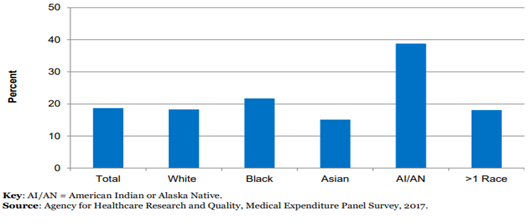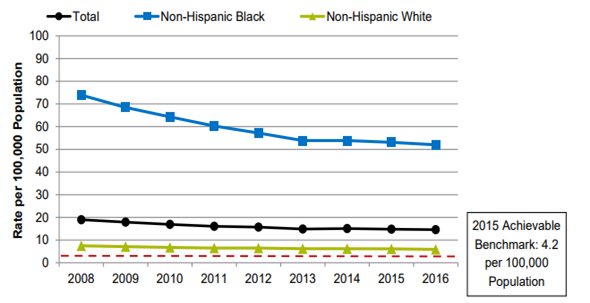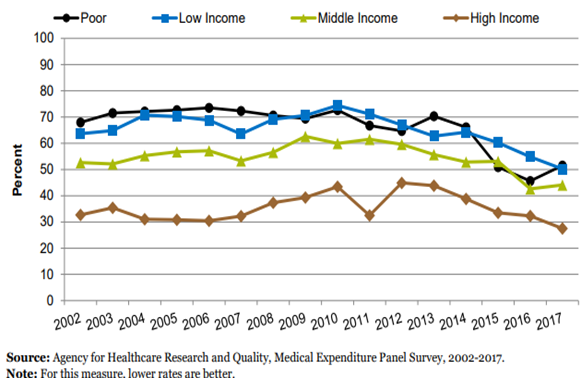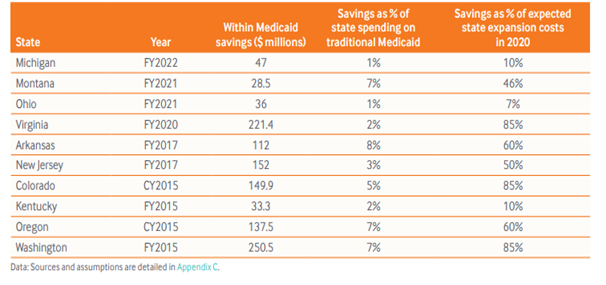BHA FPX 4020 Assessment 3 Data Collection and Analysis
Data Collection and Analysis
Health disparities in the US pose a challenge by compromising the ability to provide timely, affordable, and quality care. According to the Agency for Healthcare Research and Quality (AHRQ) (2021), healthcare disparities entail differences between population groups that determine how they access, experience, and receive healthcare services.
When elaborating on the problem of widening health inequalities, it is essential to incorporate the role of social determinants of health (SDOH) into the discussion. In this sense, synergies between ethnic, socioeconomic, environmental, and locational factors contribute to inequalities regarding access to care, care coordination, perceptions of patient safety, and care affordability.
As a country of demographic and socioeconomic diversities, the US needs to understand the interactions between health disparities. Therefore, data collection and analysis emerge as a profound strategy for enhancing knowledge and inspiring evidence-based practice for addressing health inequalities. As a result, this assessment presents data regarding various health inequalities while proposing evidence-based strategies for addressing health disparities.
Data Presentation
Figure 1: People under age 65 with any period of uninsurance during the year, by race, 2017

Figure 2: New HIV cases per 100,000 population aged 13 and over, 2008-2016

Source: Agency for Healthcare Research and Quality (AHRQ)
Figure 3: People unable to get or delayed in accessing medical care due to financial or insurance reasons, 2002-2017

Figure 4: Effects of Medicaid Expansion on States’ Healthcare Expenditures

Source: The Commonwealth Fund
Quantitative and Qualitative Analysis of Data
As noted earlier, health disparities influence how people access, experience, and receive healthcare services. In the United States, health inequalities manifest via various domains, including access to person-centered care, patient safety, healthy living, effective treatment, care coordination, and care affordability (Agency for Healthcare Research and Quality, 2021).
In this sense, national and state health organizations set achievable benchmarks based on concepts from each domain. For example, organizations emphasize adverse drug events in patients with anticoagulants, urinary tract infections, and medication safety when establishing patient safety benchmarks. These sub-themes enable healthcare institutions to compare their performance with top-performing institutions.
Since health inequalities are diverse and beyond one measure of quality, it is essential to focus on areas that demonstrate widening gaps within the social determinants of health (SDOH). In this sense, analyzing quantitative and qualitative data from national healthcare organizations such as the Agency for Healthcare Research and Quality (AHRQ) is essential to identify priority areas that demonstrate significant inequalities.
The first graph represents quantitative data regarding the problem of uninsured people under the age of 65 years. The graph makes it possible to identify disparities in access to insurance coverage among people of different ethnic backgrounds, including White, Black Americans, Asian Americans, American Indians or Alaska Natives (AI/AN), and people of more than one race.
The graph indicates that in 2017, (AI/ANs) under age 65 were twice as likely to lack insurance as whites (38.8% compared with 18.3%). Also, Black Americans were more likely than Whites to have a period of uninsurance in 2017 (21.7% compared with 18.3%). While health disparities hamper access to insurance coverage for ethnic groups, this data from the Agency for Healthcare Research and Quality (AHRQ) can inform recommendations for addressing health inequalities within the national insurance models.
Another ideal measure of health disparities is the prevalence of new HIV cases among people aged 13 and above. In Figure 2, the Agency for Healthcare Research and Quality (AHRQ) (2021) indicates the inequalities regarding new HIV cases in 2016. The graph indicates that non-Hispanic